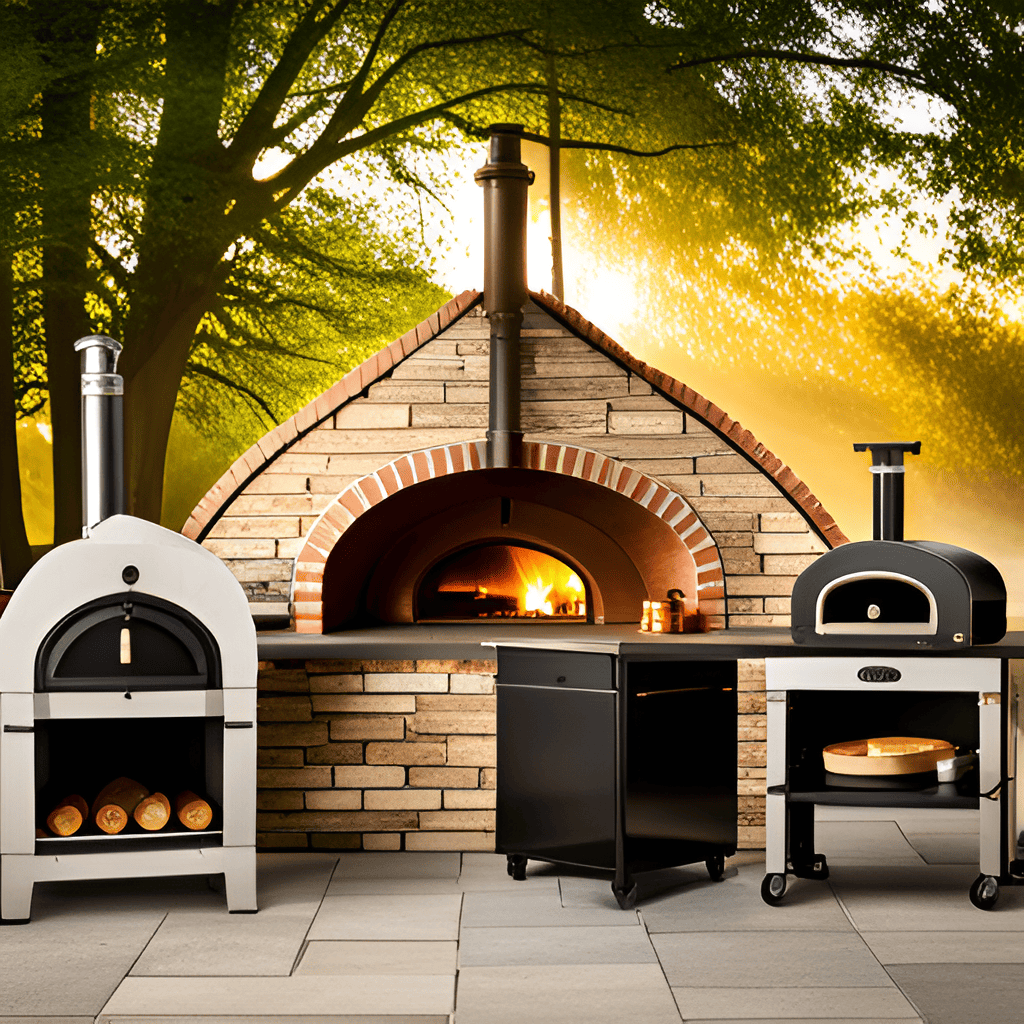If you are a pizza lover, investing in a wood-fired pizza oven can take your culinary experience to a whole new level. The tantalizing aroma, crispy crust, and perfectly melted toppings are just a few reasons why wood-fired ovens have gained popularity among food enthusiasts.
However, with various types of wood-fired pizza ovens available on the market, it can be challenging to choose the right one for your needs.
In this blog post, we will discuss each major type of wood-fired pizza oven and provide a comparison table to help you make an informed decision for your first purchase.
Types of Wood-Fired Pizza Ovens
There are several types of pizza ovens to choose from for home use. Here are the popular ones along with a description of what each offers.
- Traditional Brick Ovens:
Brick ovens are the most traditional type of wood-fired pizza oven. They are typically made of brick or stone and are permanent fixtures in outdoor kitchens or restaurants.
Brick ovens provide excellent heat retention and can reach temperatures of up to 900°F (480°C), making them ideal for cooking Neapolitan-style pizza. However, they are also the most expensive and require professional installation.
Facts: - Steel Ovens:
Steel wood-fired pizza ovens are becoming increasingly popular due to their affordability and durability. These ovens are typically made from high-quality steel and can reach temperatures of up to 800°F (427°C), making them ideal for cooking Neapolitan-style pizza.
Steel ovens are also more heat-efficient than traditional brick ovens, which means they require less time and fuel to heat up.
Facts:
- Steel ovens are designed for high-performance cooking, capable of reaching high temperatures quickly.
- Advantages: Fast heat-up time, lightweight, and more affordable than traditional brick ovens; suitable for smaller spaces.
- Considerations: May lack the traditional charm of brick ovens; less heat retention compared to brick.
- Steel ovens are designed for high-performance cooking, capable of reaching high temperatures quickly.
- Cast Iron Ovens:
Cast iron ovens are portable, affordable, and can be used indoors or outdoors. They are typically smaller than brick ovens and can reach temperatures of up to 700°F (370°C).
Cast iron ovens are versatile and can be used for cooking pizza, bread, and other foods. However, they may not provide the same level of heat retention as brick ovens.
Facts:
- Cast iron ovens are known for their durability and heat distribution properties.
- Advantages: Retains heat well, offers consistent cooking results, and may have a classic design.
- Considerations: Heavier than other types, may require seasoning for optimal performance.
- Cast iron ovens are known for their durability and heat distribution properties.
- Portable Ovens:
Portable wood-fired pizza ovens are designed for use on patios or decks and can be moved around easily. They are typically made of stainless steel and can reach temperatures of up to 900°F (480°C).
Portable ovens are affordable and easy to use, but may not provide the same level of heat retention as brick ovens.
Facts:
- Portable wood-fired pizza ovens are designed for outdoor use and are typically lightweight and easy to move.
- Advantages: Ideal for picnics, camping, and outdoor gatherings; easy to store when not in use.
- Considerations: Smaller cooking capacity and may have limited heat retention compared to larger, fixed models.
- Portable wood-fired pizza ovens are designed for outdoor use and are typically lightweight and easy to move.
- These ovens are made from refractory bricks or clay, and they have been used for centuries to bake authentic pizzas.
- Advantages: Excellent heat retention, even cooking, and an authentic ambiance; can be built into an outdoor kitchen or as a standalone unit.
- Considerations: Long heat-up time, permanent installation, and typically more expensive than other types.

Comparison Table of Wood-Fired Pizza Ovens
| Oven Type | Advantages | Considerations |
|---|---|---|
| Traditional Brick | Excellent heat retention; Authentic ambiance | Longer heat-up time; Permanent installation |
| Steel | Fast heat-up time; Lightweight | Less heat retention; May lack traditional charm |
| Cast Iron | Good heat distribution; Durable | Heavier than other types; May require seasoning |
| Portable | Easy to move and store; Ideal for outdoor use | Smaller cooking capacity; Limited heat retention |
Final Thoughts
When choosing your first wood-fired pizza oven, consider factors like your budget, available space, and cooking preferences. Traditional brick ovens offer a classic and authentic experience but may require more investment and a permanent installation. If portability is essential, a portable wood-fired oven might be the right choice. For a balance of performance and affordability, steel or cast iron ovens could be ideal.
Regardless of the type you choose, a wood-fired pizza oven will undoubtedly elevate your pizza-making game and add a touch of artisanal charm to your culinary adventures.
Don’t forget to consider what types of wood to use in your pizza oven because you have choices, each with their own flavor profile.

